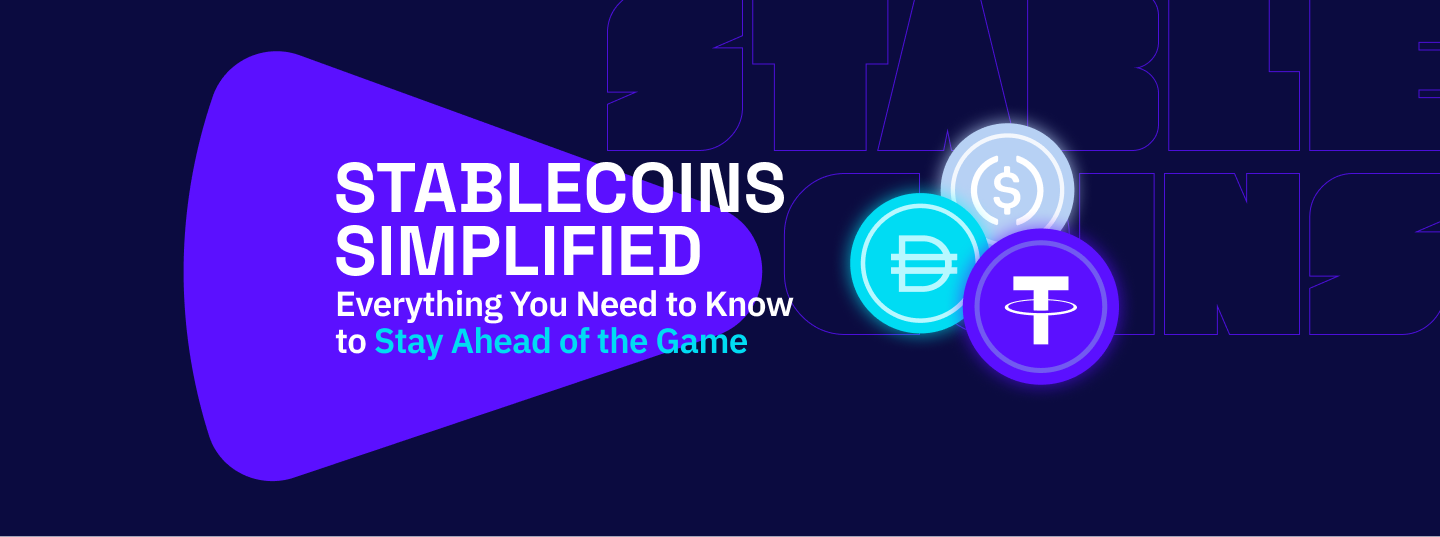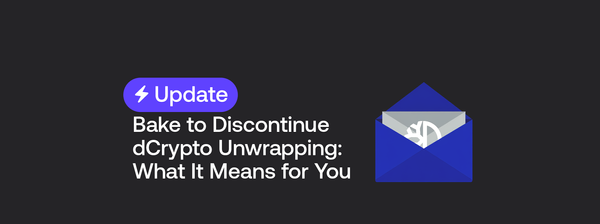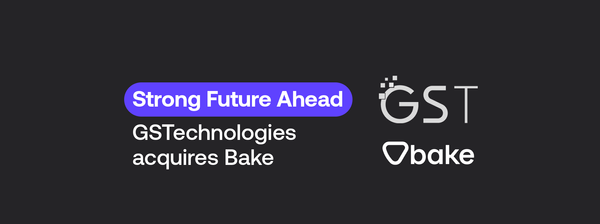Stablecoins: What Are They and How Do They Work?
The cryptocurrency market is known for its high price volatility. Just last year alone, the price of Bitcoin rose from US$20,000 to over US$63,000, only to drop nearly 50% over the following two months.
These sudden and unpredictable changes in value make it difficult for users looking to transact in crypto.
People wanting to use crypto for saving, trading, and everyday transactions require a less-volatile option.
This is where Stablecoins come in.
What Are Stablecoins?
Stablecoins solve the problem of crypto volatility by being pegged to a stable asset, such as the U.S. dollar or gold. No matter what happens in the crypto market, the value of a Stablecoin (should) remain consistent.
This consistency is attractive to many users, especially those new to crypto or looking to safeguard their investments. They can be thought of as a stepping stone into the crypto world. They are the perfect option for those who are too risk-averse to dive straight into the volatile crypto market but still want to explore what crypto has to offer.
There are currently over 100 globally distributed Stablecoins. Popular options like USDC, BUSD, and DUSD make interacting with crypto easier than ever while protecting your investments from market volatility.
How Do Stablecoins Work?
There are three distinct categories of Stablecoins, each with a different mechanism for maintaining a stable value.
Fiat or Commodity-Backed Stablecoins
These Stablecoins are tied to the value of traditional currencies like the U.S. dollar or commodities like gold. An equivalent value of the currency/commodity is held in reserve for each Stablecoin.
For example, if a Stablecoin is pegged to the U.S. dollar, there is (meant to be) $1 in reserve for each Stablecoin in circulation. These reserves are routinely audited by independent accounting firms, with the details of their holdings regularly published for public viewing.
Holders of fiat-backed Stablecoins can exchange their Stablecoins for an equivalent amount of fiat currency at any moment and vice versa.
Cryptocurrency-Backed Stablecoins
Another method for maintaining the value peg of Stablecoins is through crypto-collateralization. This is where Stablecoins are supported by reserves of other cryptocurrencies.
Given the high volatility of cryptocurrencies, crypto-backed Stablecoins are often overcollateralized to counteract market fluctuations.
An example of such a Stablecoin is DAI, issued by MakerDAO. It is collateralized at 150%, meaning each DAI in circulation is backed by 1.5 times its equivalent value in crypto.
Algorithm-Backed Stablecoins
Algorithmic Stablecoins do not rely on collateral to maintain their stability. Instead, they use complex algorithms to adjust the supply of the Stablecoin.
This system involves smart contracts that adjust the circulating supply based on market conditions. If the Stablecoin’s price starts to drop, the smart contract reduces its supply. When its price starts to increase, the smart contract expands the supply.
This method was infamously used by TerraLuna’s UST — the Stablecoin that lost its peg in early 2022 and caused the entire crypto market to crash.
Most Popular Stablecoins
There are approximately 200 Stablecoins in existence today. Some of the most popular include Tether (USDT), USD Coin (USDC), Binance Dollar (BUSD), Dai (DAI), and Defichain's DUSD.
Tether (USDT): A fiat/commodity-backed Stablecoin and the most widely used Stablecoin on the market. It currently ranks as the third largest cryptocurrency by market cap behind BTC and ETH. It has maintained a 1:1 peg with USD since its launch in 2014.
USD Coin (USDC): The second biggest Stablecoin, USDC gained popularity as an alternative to USDT. It is backed entirely by fiat currency and maintains a 1:1 peg with USD. The company behind USDC, Centre, utilizes smart contracts to automate the issuance of USDC to help decentralize the process.
Binance Dollar (BUSD): A U.S. dollar-backed Stablecoin that operates on the Ethereum (ETH) blockchain. It was created by Binance, the world's largest cryptocurrency exchange, and Paxos, a leading crypto infrastructure provider. BUSD is one of the first government-regulated Stablecoins approved by the New York State Department of Financial Services (NYDFS).
Dai (DAI): is a decentralized crypto-caked Stablecoin. It is one of the earliest contributors to popularizing Decentralized Finance (DeFi) and was the first truly decentralized Stablecoin. It is maintained by MakerDAO and uses a series of decentralized smart contracts to issue the Stablecoin. It is overcollateralized by at least 150% by a pool of various cryptocurrencies.
DUSD: Similar to DAI, DUSD –– the Stablecoin of DeFiChain –– is also overcollateralized by various cryptocurrencies to maintain its stability. However, it also uses algorithmic backing to help maintain its value further.
How to Use Stablecoins
Stablecoins present various use cases beyond that of traditional cryptocurrencies. They can be utilized as a store of value, a low-cost tool for cross-border transactions, and offer unique opportunities for high-yield income generation.
Store of Value
One of the most relevant use cases for Stablecoins is as a safe store of value. In 2022, global inflation reached all-time highs. Citizens in Venezuela (156%), Argentina (88%), and Turkey (88.5%) were some of the hardest hit.
Stablecoins act as a safe haven for people in such heavily affected areas. They are easily accessible to anyone with an internet connection and maintain a safe peg to less volatile currencies/assets.
Cross-Border Payments
Stablecoins can bypass the traditional banking system when making cross-border payments.
As Stablecoins are sent over the blockchain, they are not subject to foreign exchange rates or lengthy wait times when sending money internationally.
Income Generation
Decentralized Finance (DeFi) has introduced several innovative ways to generate income using Stablecoins. Platforms like Bake allow users to earn attractive interest on their holdings through services like Liquidity Mining, Staking, and YieldVault.
Rather than simply holding assets in a traditional bank, users can actively participate in the financial ecosystem and earn high-yield returns on their savings.
Use Stablecoins With Bake
Stablecoins are a tool that can help you save, spend, and earn. And with Bake, it's easy to get started.
Bake's comprehensive suite of DeFi services has something for everyone. Whether you're looking to earn interest on your assets through liquidity mining and staking, manage your money in a decentralized environment, or build long-term savings with potential for growth, Bake provides the tools and support you need.
Are you ready to explore the realm beyond traditional banking? Want to engage with a financial system that offers transparency and control? Sign up to Bake today, and take the first step in securing your financial future.

DISCLAIMER: Please note that the information on this blog and in any articles posted on this blog is for general information only and should not be relied upon as financial advice. Cake Pte. Ltd., Bake, UAB, and its affiliates (the “Cake Group”) are not licensed financial advisers. You may wish to approach your own independent financial advisor before making any decision to buy, sell or hold any product and/or digital assets mentioned in this blog.
Any views, opinions, references, assertions of fact and/or other statements are not necessarily the views held by the Cake Group. The Cake Group disclaims any liability whatsoever that may arise out of or in connection with such statements. Always do your own research before investing in any financial assets and consult a qualified financial advisor if necessary.




